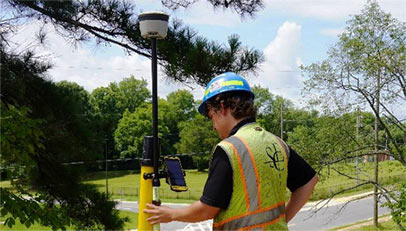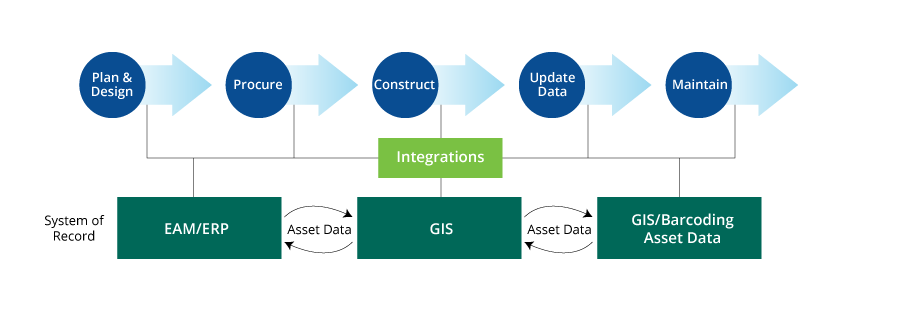A successful Materials Tracking and Traceability program improves workflows and supports asset management best practices.

A Materials Tracking and Traceability (Track and Trace) Program is much more than just data collection hardware and software. Recent advances in hardware including support for real-time sub-centimeter locations and barcoding as well as easy-to-use software have made quality data collection an affordable reality for most organizations. These advances are important, but they don’t guarantee success for your Track and Trace Program. Our many years of experience in asset management and data collection processes give us a roadmap for an effective Material Track and Trace Program that will bring true value to your utility and support regulatory mandates such as PHMSA §192.63. We believe the following five elements are essential to any utility’s Track and Trace program:
(1) An Effective Track and Trace Program Integrates Seamlessly with Your GIS and EAM
Without GIS and enterprise asset management (EAM) integration, a Track and Trace program is little more than advanced surveying. To get the benefits of a Track and Trace program, data needs to flow in near real time between the data collection device and the enterprise GIS and EAM.
These integrations allow teams to monitor and measure what data is being collected and its precise location. It allows assets to be tracked against work orders and supports contractor invoicing and materials management. It ensures a single source of truth and minimizes discrepancies between what’s in the field and what’s in GIS and EAM.
(2) It Complements Field Operations
Depending on how it’s implemented, a Track and Trace program can complement construction and repair field operations – or it can get in the way. An effective program closely coordinates field operations crews and data collection crews and integrates work processes.
Construction and data collection activities are synchronized so that data collection doesn’t impede daily operations. Procedures must be developed to ensure that all the important work gets done in a timely fashion – both the work on the pipes and the data collection.
(3) It Enhances Work Processes
A well-designed Track and Trace program in fact improves overall process efficiencies – both for field operations and data collection. Traditional workflows treat data collection and work management processes separately, where both the construction team and the data collection team enter data on the installed assets in separate systems. Track and Trace allows you to capture the data once and use it in multiple systems, eliminating duplication and redundant processing.
A well-designed Track and Trace program also automates data collection and eliminates paper-based work processes. That may seem obvious, but some organizations implement a Track and Trace program without systematically eliminating the existing paper-based processes. That approach can result in decreased rather than improved productivity. Instead, the whole system should be considered so you can capture the multiple opportunities for process efficiency.
(4) It Supports Asset Management Best Practices
A well-designed Track and Trace program is an integral part of asset management. The foundation of an asset management program is based on high-quality asset data and integrated systems that support CIP planning, inspections, and renew / repair / replace decisions.
A robust Track and Trace program requires many of these same systems and processes. Specifically, it requires linkages between the new material review and approval process (engineering), the procurement process, the design process, and the construction process. Track and Trace needs these connections to be in place to support data validations and automatic data population, and they also support asset management best practices. Track and Trace is in fact an extension of asset management best practices.
(5) It Improves Material & Operator Qualification Accountability Through Robust Quality Control
Track and Trace is a quality system that improves not just data, but the construction process itself and ultimately the safety and reliability of the distribution and transmission networks.
Materials are validated against the utility’s approved materials list to ensure that they have been approved for use in the system. If the specific material assets are not approved, they are flagged during data collection so that they can be reviewed by a construction manager or engineer before they are incorporated into the system.
Likewise, the personnel performing the installations need to be trained and approved to perform the work at hand. Operator Qualification or OQ validation is therefore an important component of the Track and Trace process. During installation, the operator’s badge is scanned and compared to the utility’s OQ database. If the installing employee is not qualified for the specific task (welding, fusion, etc.) they are performing, they are flagged in real-time during field data collection to prevent them from performing that work.

Getting the Most Out of Your Track and Trace Program
While Track and Trace may be driven by regulatory mandates, we believe it’s an excellent opportunity for utilities to support and improve multiple aspects of their business. We believe these five elements will help you make the most of this opportunity.


